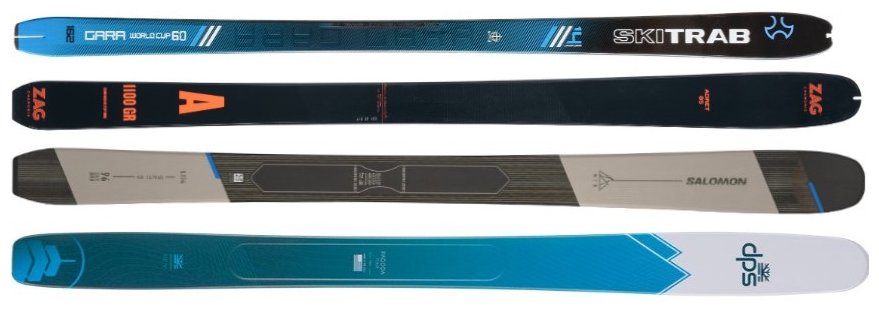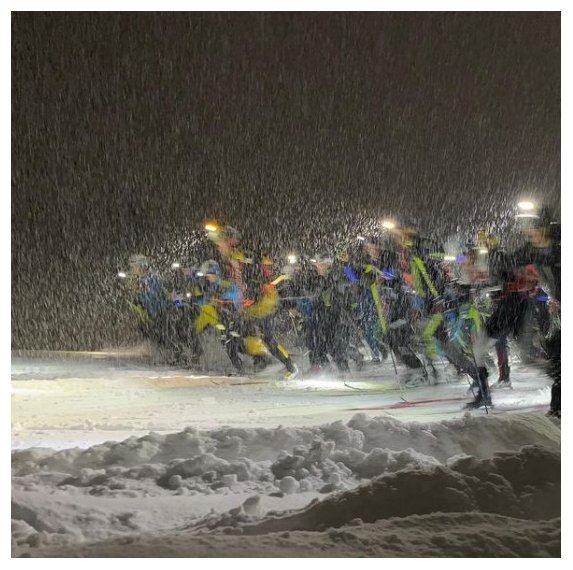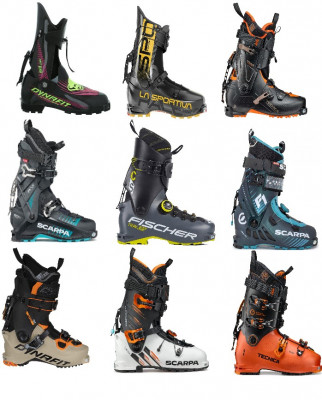6/9/2023 Backcountry Skis - How to Choose
With the increasing number of backcountry skis available, selecting the best one for the task can feel daunting. Like in many professions, there are specialized tools designed for specific tasks. The same is true with backcountry skis, which we divide into four broad categories: race, ski mountaineering, all-around touring, and powder. Race skis are the lightest and narrowest while powder skis are generally the heaviest and widest. In the middle are mountaineering and touring skis, which try to strike a balance between the two.

A Word on Vocabulary
Let's quickly establish some terms you will see used below, if unfamiliar:
- Surfy - The ability of a ski to pivot out of a turn and slide on its edges, rather than carving.
- Precise - The propensity of a ski to want to carve on its edges.
- Effective Edge - The actual amount of edge contact with the snow.
- Damp - Ability of a ski to lessen feedback transmitted from the snow to the skier.
- Camber - Negative curve along the length of the ski that is above the snow when unweighted.
- Rocker - The portion of the ski at the tip and/or tails that curves up off the snow when resting flat.
The Weight Debate and Ski Performance
A common myth is that ski weight translates directly to downhill performance. While pounds and ounces can be part of the equation, by itself weight is not a performance metric.
Functionally speaking, increased ski weight can help a ski track and plow through variable snow and crud instead of getting deflected. Additionally, some will argue that heavier skis are more damp than their lighter siblings, which can be true in some cases. Instead of relying on dense wood cores and metal sheets for reducing vibration, backcountry ski manufacturers pair lighter woods with carbon fiber, cork, foam, rubber, and other materials allowing them to achieve similar levels of dampening with less weight. Some are quite successful and end up even more cushy than skis that are heavier. In fact, we're now seeing alpine skis incorporate layup techniques originally created for backcountry skis.
Looking deeper, ski "performance" being good or bad is often conflated with design characteristics such as ski shape, rocker profile, flex profile, camber profile, material composition, and mounting point. Taken together, these make a much bigger difference to enjoyment than a ski's weight. For example, weight doesn't make a ski feel loose or precise. It doesn't make a ski feel playful or stiff. It doesn't help with the energy and "pop" out of a turn. It doesn't help with turn initiation. Further supporting the thesis that weight isn't performance is the fact that resort skis, on average, are getting lighter! Turns out that having fresher legs at the end of the day is also welcomed by resort skiers.
In a backcountry context with most of your time spent skinning, lighter skis obviously allow you to move with greater efficiency. With that in mind, the ultimate goal is to find the lightest ski possible that lets you ski the way you want. Which ski that is varies by skier size, experience, style, and snow conditions. The right setup will enable your enjoyment of both the ascent and the well-earned descent.
A Note on Sizing
We find that many experienced and aggressive resort skiers tend to ski more defensively in the backcountry. Because of this, sizing slightly shorter than what you use in a ski resort may be in order. For example, someone who uses an 189cm ski in the resort may find that 183cm is enough in the backcountry. While being more forgiving in tight spots, shorter also means less weight and easier kick turns, making your skinning experience that much better. Longer skis tend to be less maneuverable but more stable at speed. If you plan on charging into the backcountry ski films, keeping to your resort length is recommended.
As the name implies, race skis are perfect for folks who want to move in the most efficient way possible. They are between 63-71mm wide at the waist and utilize the lightest construction of all ski types. This includes using the lightest core materials, reducing all “unnecessary” material, thin edges, liberal use of carbon fiber, and so on. Most race skis will have flat tails, plenty of camber underfoot, and a very slight tip rocker. This results in race skis having a greater percentage of effective edge relative to their length, making race skis feel more precise versus surfy. While there are exceptions, race skis are generally stiff, which allows them to move with great efficiency and speed, which is perfect in a race setting.
Race skis pair best with race boots, however, touring boots are also generally acceptable. When sizing race skis, there are typically two options: something in the range of 150cm or 160cm. The 150cm size is the shortest allowed by the ISMF for females while men must stay above 160cm in length. Some skis, such as the Ski Trab Gara World Cup, have different flex profiles for a given size. To determine which flex is right for you, please contact us.

Mountaineering skis are the next lightest when compared to the race category. These skis are best for those wanting to do long traverses, make hop turns down steep terrain, harvest faraway corn, or participate in skimo races without buying a specialized race ski.
Skis in the mountaineering category generally range between 74-86mm underfoot. Construction methods within this category are diverse. Some use a heavier construction (thicker edges, burlier cores, etc.) while others utilize a lighter, race-style construction. Most skis in this category will have a flat tail, camber underfoot, slight tip rocker, and a confident amount of effective edge. These characteristics combine to make mountaineering skis feel more precise than surfy. A mountaineering ski aims to provide solid edge hold, reliable handling, and excellent skinning performance for long approaches/traverses.
Race, touring, and freeride boots are all acceptable to use with mountaineering skis. Because mountaineering and fitness skis feature less rocker and more effective edge, sizing down is generally a good option. This also makes them very maneuverable and easy to get on and off your pack. Most find -10cm to -15cm from their height to work best.

Touring skis are often for individuals seeking one ski that can handle all backcountry conditions. Available in all shapes, sizes, and weights, touring skis generally range between 87 to 104mm underfoot. They tend to be more rockered and utilize heavier constructions than race and mountaineering skis, though some utilize lightweight race constructions. Skis in this category can feel quite precise or surfy. About anything goes in terms of design, so for questions on the characteristics of specific touring skis you are considering, please contact us.
Through the use of different and more materials, touring skis tend to be heavier and damper relative to race and mountaineering skis. Most skis in this category utilize more rocker which, combined with the extra width, makes them more maneuverable in soft snow. Touring skis are best paired with touring or freeride boots. With their all-around nature and more generous rocker profile, sizing a little longer relative to mountaineering skis is appropriate. As a starting point, we would recommend considering -10cm to +0cm from your height.

Powder skis are specialized tools optimized for the deepest, dreamiest, and softest days of the season. Skis in this category will be relatively wide, have significant amounts of rocker in the tip and tail, and often a softer flex. Construction and sidecuts will vary in this category. Some skis utilize heavier constructions while others utilize more race-inspired construction. Powder skis will generally feel less precise and surfier than the other categories.
Because of their width, softer flex, and ample rocker, powder skis are designed to slay fields of powder. The increased rocker and shorter effective edge make powder skis easier to pivot and thus more maneuverable. In general, they aren't good for ice or harder snow conditions. If you regularly ski manky snow with your powder skis, most would agree freeride boots are the best tools to drive these bigger skis. If you are only skiing dreamy fields of untracked snow, which is an inherently forgiving snow type, then touring or even race boots can be used for the most efficient uphill experience. For sizing, we recommend -5cm to +5cm from your height.

Conclusion
That sums up how we categorize skis. Of course, the most important factor is the skier. Please don't hesitate to call so we can nerd out with you and find the perfect ski for your application. Do you disagree with our synopsis or have your own categories? Please let us know in the comments below. Happy skiing!
Comments









